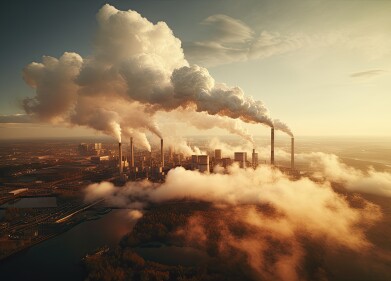Air Monitoring
CO2 Continued to Rise in 2018
Jan 31 2019
Carbon emissions reached an all-time high in 2018, according to new research undertaken by the Global Carbon Project (GCP) and published in December. Last year’s increase of almost 3% was far bigger than the 1.6% hike experienced in 2017, scuppering hopes that CO2 emissions had peaked after three previous years of plateaus.
The report sheds light on the countries and the industries most culpable for the increased emissions, identifying the continued use of coal and the ubiquity of vehicles fuelled by internal combustion engines all over the globe as the prime suspects. Experts say the news is a hammer blow to those who believed the world had turned a corner with regards to carbon and stress the need to take action immediately.
The national leader-board
Unsurprisingly, the Chinese are top of the pile when it comes to the most polluting countries, in large part thanks to their huge population and the reliance of their economy on heavy industry. The US is the second biggest emitter, followed by the EU (as a region) and India.
While emissions from the EU actually decreased incrementally over the last year (by 0.7%), these were more than offset by sizable increases in the US (2.5%), China (4.7%) and India (6.3%). The rest of the world taken together was projected to have experienced a 1.8% rise in carbon emissions from 2017, indicating that while the problem may be localised in certain industrial hotspots, it is indeed a global one.
Coal and car exhausts the chief culprits
The Chinese government’s decision to prop up its economy has resulted in significant resources being poured into the coal and steel industries, as well as other polluting sectors like construction. Elsewhere, India’s over-reliance on coal to meet its power needs has contributed to the vast amount of carbon generated by the fossil fuel, and although working conditions in coal mines in developing countries is improving, the environment continues to suffer.
Meanwhile, vehicular traffic was a planet-wide factor in the rise in emissions. Even in the EU, consumption of fuel used for road traffic and aviation jumped up by 4%, while the US saw a comparatively modest rise of 1.4%. On the bright side, several countries have pledged to phase out vehicles which operate on fossil fuels over the next couple of decades, with France, India, the Netherlands and the UK promising to outlaw their sale by 2040 and Norway going one better with a 2025 ban in the pipeline.
Looking to the future
So what will replace the internal combustion engine? The market for electric vehicles (EVs) continues to grow, while research is ongoing into other forms of environmentally-friendly road transportation powered by hi-tech gases. Similarly, coal is slowly being phased out and is expected to be ultimately replaced by renewables, nuclear, biogas or other greener fuels in the coming years. Whatever the solution, the latest statistics confirm that we must act sooner rather than later if we are to avoid the 1.5°C temperature rise set as a ceiling at 2015’s Paris climate summit.
“Global commitments made in Paris in 2015 to reduce emissions are not yet being matched by proportionate actions," explained Dr Glen Peters, lead author on the paper. “The rise in emissions in 2017 could be seen as a one-off, but the growth rate in 2018 is even higher, and it is becoming crystal clear the world is so far failing in its duty to steer onto a course consistent with the goals set out in the Paris Agreement in 2015.”
Digital Edition
AET 28.3 September 2024
September 2024
Business News - ENVEA announces acquisition of APAQ Group - SICK and Endress+Hauser sign strategic partnership - Efforts to curb gas flaring intensify amid environmental concerns Air Monito...
View all digital editions
Events
Nov 05 2024 Toronto, Canada
Nov 05 2024 Rimini, Italy
Nov 06 2024 Ho Chi Minh City, Vietnam
Nov 12 2024 Tel Aviv, Israel
Nov 12 2024 Valencia, Spain



















